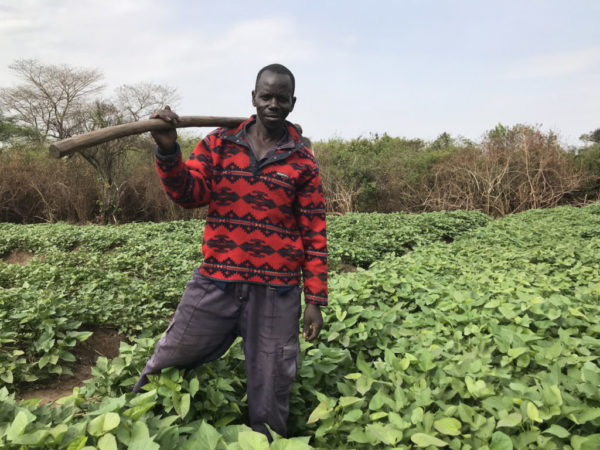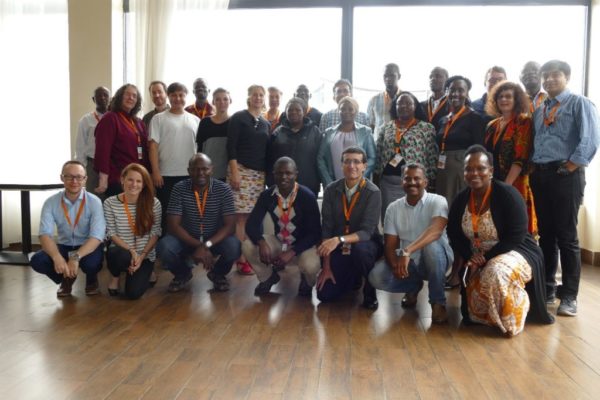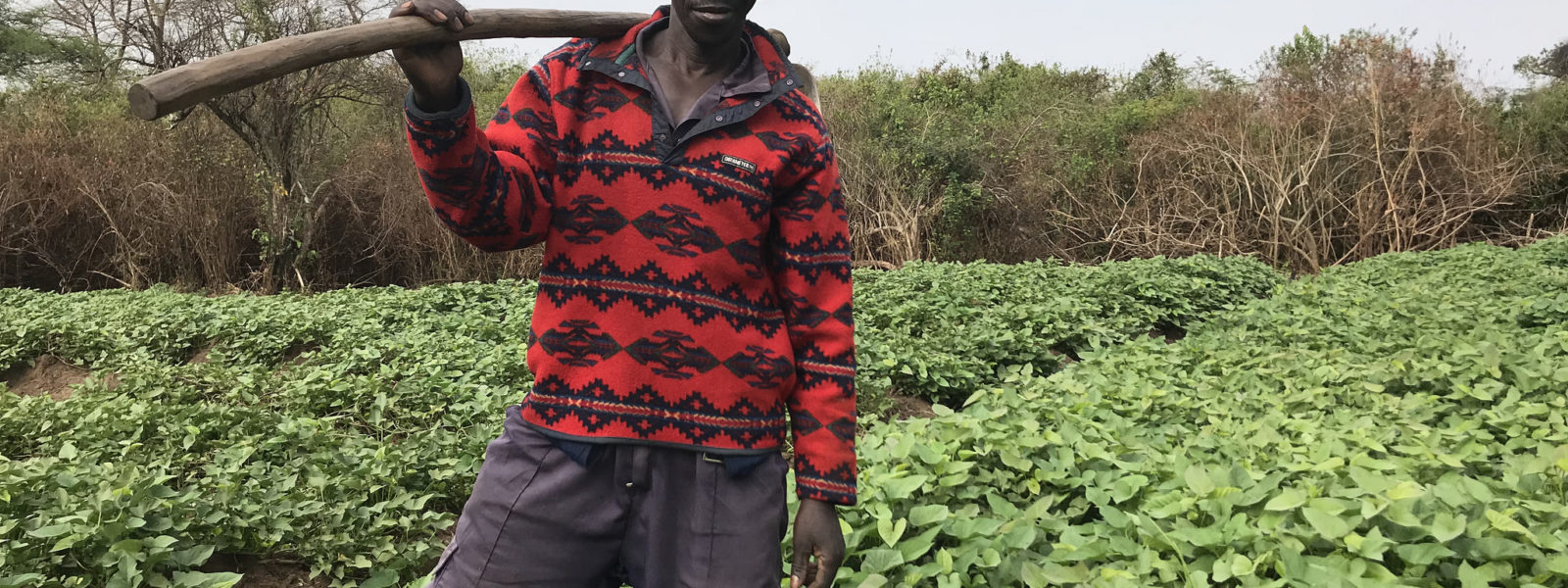Have you ever wondered what the potatoes, cassava, bananas and sweetpotatoes you eat are grown from? While they are still called ‘seed’, they take the form of suckers, roots and tubers. This kind of planting material comes with quite a unique and complex set of challenges, in part stemming from their bulky and perishable form, and vulnerability to passing disease from the parent to progeny plant. So how, and under which conditions, do farmers get the quality seed needed to produce our food? The answer to this question is in turn complex and requires a collective interdisciplinary effort.
For this reason, researchers from around the world came together in late March, 2018, in Nairobi, Kenya. The group of researchers met with the goal of discussing a toolbox to study root, tuber and banana seed systems, learn from them, and design better seed interventions, all with the goal of ensuring that quality seed is made available to farmers and gets into the food production chain.

An orange-fleshed sweetpotato seed multiplier on his farm in Uganda. Root, tuber and banana planting material has a unique and complex set of challenges. Photo: V.Atakos/CIP
On the first day of the meeting, 13 tools developed by this group of scientists, were presented to and discussed by the participants. Some of these tools such as the multi-stakeholder framework for intervening in root, tubers and bananas seed systems tracing, and seed tracing are helpful in the study of the social characteristics of farmers, while others focus more on the biological characteristics of the seed system (seed degeneration models and performance mapping). Several projects carried out Ecuador, Ethiopia, Georgia, Kenya, Nigeria, Uganda and Vietnam presented their progress regarding the validation of these tools.
At the end of a busy and informative first day, the participants were divided into two teams as the next day involved learning journey visits to two important institutions contributing significantly in the production of quality seed in Kenya. These are the ‘Kenya Plant Health Inspectorate Service’ (KEPHIS) and ‘Genetic Technologies International Ltd’ (GTIL).
Early the next morning participants traveled to either KEPHIS or GTIL and had guided visits facilitated by staff at the two institutions. They toured the laboratories and screenhouse facilities and asked questions about the role of these institutions in the Kenyan sweetpotato, potato, cassava and banana seed systems. After the visits, the teams reconvened at the meeting venue and shared their experiences.

A group photo of workshop participants from Bioversity, CIAT, CIP, IITA, University of Florida and WUR. Photo: F. Njunge/CIP
The third day had a lot of fruitful discussions that ranged from a recap of experiences, new projects and even new tools. The recap was helpful to assess the lessons from the previous days and identify emerging research questions and gaps in the development of the tools. Four new projects were introduced to the participants. Two related to gender issues and seed systems, the third to understanding seed systems in Haiti, and the fourth focused on seed systems and markets (presentations can be found here). After these presentations, three new tools aiming to track seed, map the seed flow and track the costs of seed production were introduced and discussed.
On the last day, there was space for further discussions about the different tools. The teams involved in the validation discussed the limitations of each tool and how to use them in comparing the different crops. Dr. Karen Garret, an eminent professor from the University of Florida facilitated this session. The comparison between the different crops was one of the main concerns for the participants. As the workshop drew to a close, participants spent an hour and a half discussing communications and knowledge management (KM) for the team. The facilitator of the session, Rosemary Kihiu a communications and KM specialist for the International Potato Center (CIP), guided the team through a session on identifying successes in the team’s communications and KM activities, existing gaps and how best to address them.
“The meeting in 2018 was for me the best effort yet to solidify activities around the seed systems backbone and to reveal challenges that occur across crops and across production systems,” Aman Omondi, an Associate Scientist with Bioversity International in Benin summarized his experience of the four days at the workshop. He is hopeful that in the near future similar workshops will continue to refine the group’s glossary of tools and approaches, and hopefully enable more cross-crop tools to emerge. No doubt the seed systems team has this goal on their agenda and continues to make progress towards standardized tools.
This meeting was convened as part of the CGIAR Research Program on Roots, Tubers and Bananas (RTB) Flagship project 2 on ‘Adapted productive varieties and quality seed‘. The flagship aims to make available good-quality planting materials of a diverse set of high-yielding root, tuber and banana varieties that are adapted to the needs and preferences of different stakeholders in the value chain.
Blog contributed by Israel Navarette, PhD student, CIP Ecuador, with editing by Rosemary Kihiu.
